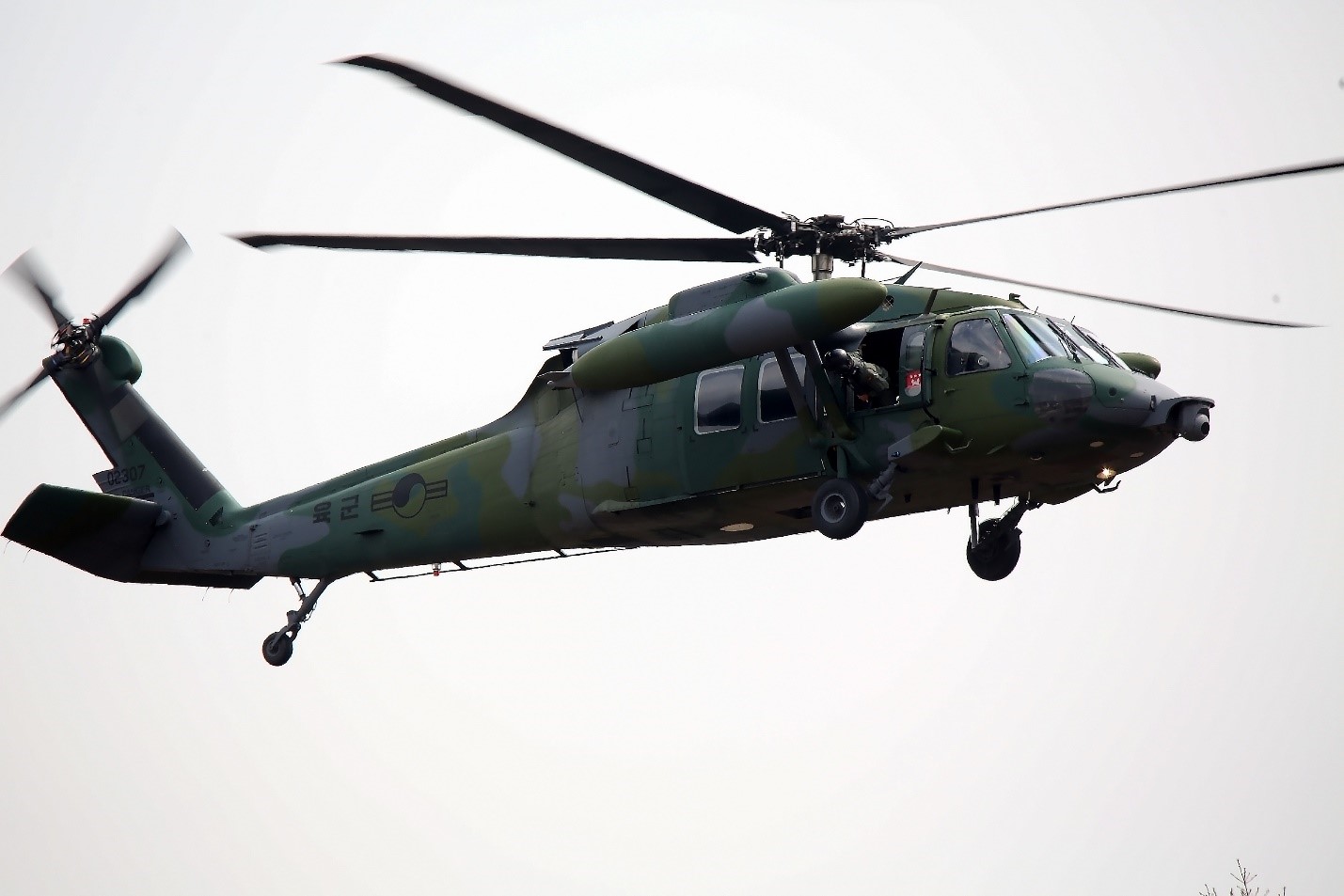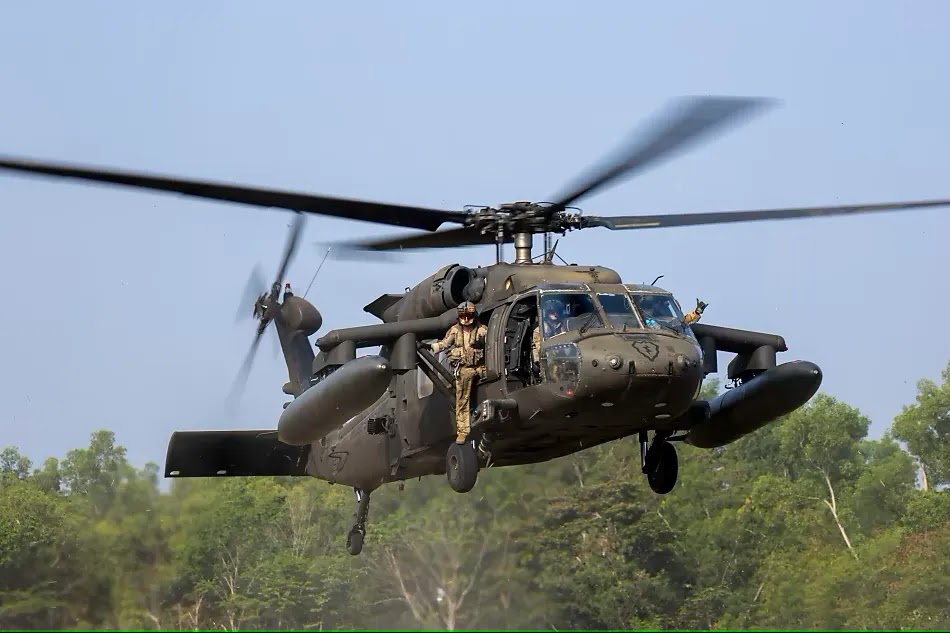Everything You Need to Understand About the UH 60 Helicopter
The UH-60 helicopter, a keystone of U.S. Army air travel because its debut in 1979, represents an amazing blend of design and functional flexibility. Recognized for its phenomenal speed and array, the UH-60 has actually been adapted for various objectives, from troop transport to clinical evacuation. As army demands evolve, so too does the helicopter, with ongoing improvements focused on boosting its capabilities and incorporating modern technologies. To totally appreciate the relevance of the UH-60 in contemporary army procedures, one must consider its background, design, and the future advancements that can redefine its function.
Background of the UH-60
Established in the late 1970s, the UH-60 Black Hawk helicopter emerged as a response to the U.S. Military's demand for a versatile utility helicopter that can execute a variety of objectives under challenging conditions. The motivation for its layout was the imperfections identified in the earlier helicopters made use of throughout the Vietnam Battle, particularly in regards to survivability, rate, and ability to move.
The Black Hawk was made by Sikorsky Aircraft, integrating sophisticated innovations and materials to boost its performance and durability. It was formally presented right into service in 1979, rapidly coming to be a crucial possession for army operations - uh 60. Its capability to deliver troops, clinical discharge, and logistical support in both fight and altruistic objectives made the Black Hawk a vital part of the united state Army's air travel fleet
Throughout the years, the UH-60 has been continually upgraded, adapting to the transforming nature of war and the progressing demands of modern military operations. Its operational background includes involvement in significant problems, peacekeeping goals, and catastrophe relief initiatives, strengthening its credibility as a reputable and reliable helicopter in different environments worldwide.

Layout and Specs
The design of the UH-60 Black Hawk helicopter consistently mirrors a commitment to functional effectiveness and versatility. Developed by Sikorsky Airplane, this medium-lift utility helicopter includes a smooth, wind resistant fuselage that boosts rate and ability to move. Its tandem rotor system, identified by 2 counter-rotating blades, minimizes vibration and raises lift capacity, enabling safer procedures in diverse environments.
The UH-60 is powered by 2 T700-GE-701C turboshaft engines, providing a maximum speed of around 180 knots and a variety of around 400 nautical miles. Its robust airframe is created from sophisticated composite materials, making certain durability while preserving a relatively low weight. The helicopter has an optimum gross weight of regarding 22,000 pounds, sustaining a flexible haul setup.

Functions and Goals
A versatile system, the UH-60 Black Hawk helicopter offers a plethora of duties and goals within military procedures. Developed largely for troop transportation, it can lugging approximately 11 soldiers, my sources making it a crucial possession for rapid implementation and logistical support.
In enhancement to army transport, the UH-60 masters clinical discharge (MEDEVAC) objectives, geared up with sophisticated medical devices to offer important treatment throughout transit. Its ability to run in varied settings enhances its performance in fight search and rescue (CSAR) operations, where speedy removal of employees is crucial.
The helicopter additionally plays a substantial role in reconnaissance and security missions, making use of onboard sensing units and equipment to gather intelligence. Its convenience extends to logistical assistance, qualified of transferring materials and tools to forward operating bases.
In battle procedures, the UH-60 can be furnished with various tool systems, enabling it to supply close air assistance. Its multi-role capability makes the Black Hawk an indispensable device for modern-day army pressures, adapting effortlessly to the advancing needs of battleground scenarios and guaranteeing goal success throughout a variety of functional contexts.
Performance and Capacities
Known for its durable efficiency, the UH-60 Black Hawk helicopter boasts outstanding abilities that boost its operational efficiency throughout different goals. uh 60. This multi-role airplane is equipped with effective twin-engine Turbomeca Arriel 1D1 engines, offering outstanding speed and maneuverability, with a maximum cruise ship rate of roughly 150 knots and a functional range of around 400 maritime miles
The Black Hawk's sophisticated avionics and fly-by-wire control systems dramatically boost trip security and handling, allowing it to operate in diverse atmospheres, consisting of negative climate conditions. Its flexibility is more exhibited by its capability to carry approximately 11 completely geared up troops or a payload of about 8,000 pounds, making it perfect for troop transport, medical emptying, and logistical support objectives.
Furthermore, the UH-60 is developed for survivability, including reinforced airframes, ballistic protection for staff and travelers, and advanced countermeasure systems to avert threats. The helicopter's dexterity and speed, combined with its ability for rapid deployment, make it an important property in modern armed forces procedures, making certain that it continues to be a crucial element of tactical air assistance and combat zone movement.
Future Advancement

One significant emphasis is the integration of innovative avionics systems, which will certainly improve situational understanding through enhanced navigation and communication capacities. This includes the possible use fabricated knowledge to aid pilots in decision-making and goal planning.
In addition, future versions may integrate advanced materials and style attributes to bolster the helicopter's sturdiness and lower its radar trademark, improving survivability in disputed environments.
The introduction of hybrid-electric propulsion systems is likewise coming up, intending to improve gas performance and decrease logistical worries. Such improvements could expand operational range and minimize the helicopter's environmental footprint.

Verdict
The UH-60 helicopter represents a considerable advancement in military air travel because its intro in description 1979. Its durable style, functional capacities, and constant upgrades ensure its significance in various operational duties, including army transport and clinical evacuation. As technology progresses, future developments will likely enhance its efficiency via the integration of fabricated knowledge and hybrid-electric systems. The UH-60's withstanding existence underscores its crucial role in modern military procedures and highlights the ongoing evolution of armed forces aeronautics technology.
The UH-60 helicopter, a foundation of United state Army aeronautics given that its launching in 1979, stands for an amazing blend of engineering and functional adaptability. As military needs develop, so as well does the helicopter, with continuous advancements aimed at enhancing its abilities and incorporating contemporary innovations.The design of the UH-60 Black Hawk helicopter constantly reflects a dedication to operational efficiency and adaptability. Established by Sikorsky Airplane, this medium-lift energy helicopter includes a streamlined, aerodynamic body that boosts speed and ability to move.The UH-60 helicopter stands for a considerable innovation in army aviation because its intro in 1979.